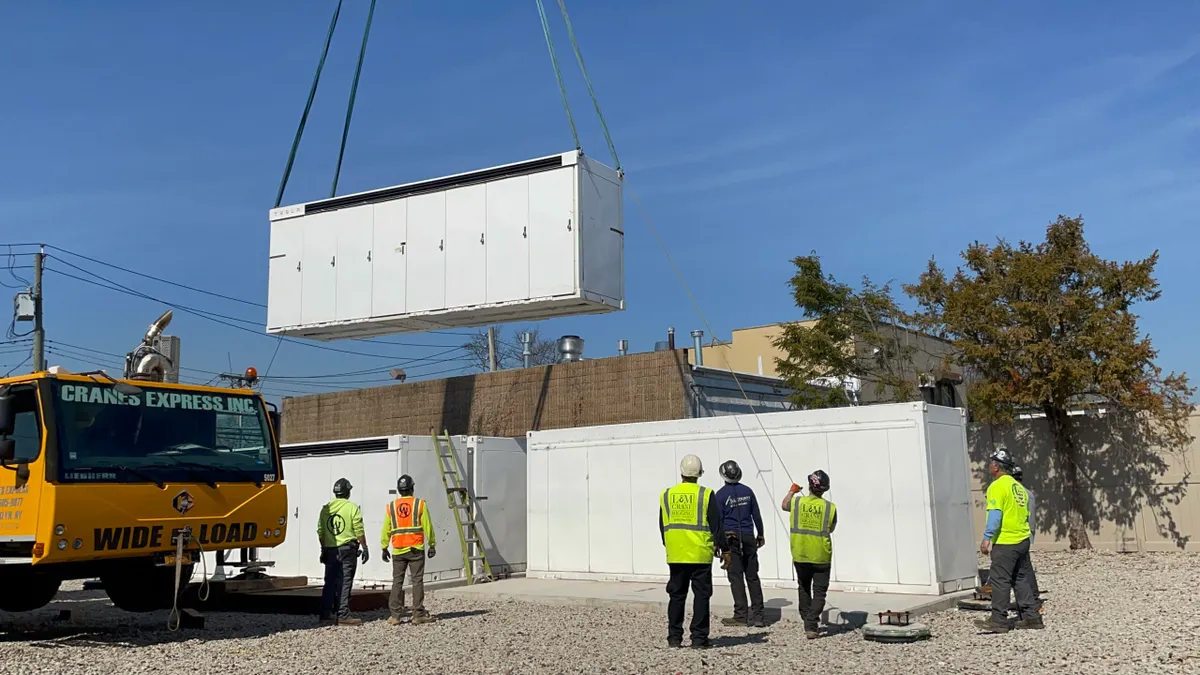The following is a contributed article by Derek Sackler, an energy markets expert at PA Consulting.
Key to the conventional wisdom around investment in new battery energy storage systems (BESS) has been the lucrative earning opportunity in ancillary service markets- markets used to compensate flexible generating resources for services used to balance generation and load on the power grid in real time. Ancillary service markets support a stable and balanced grid by ensuring an available supply of various tiers of responsive generation- some of which fast-responding batteries are well-suited for. Indeed, existing BESS have been observed reaping lucrative revenue from ancillary service markets like the California ISO- in some instances upward of $100 per kW-year, allowing for rapid recovery of their initial capital outlay.
Battery storage investors, however, should be wary of building investment cases primarily based upon future ancillary service market value expectations. Similar to developer experience with the RegD (a fast-responding regulation service that sends a dynamic signal to counterbalance instantaneous frequency deviations) market in PJM, we expect the proliferation of new battery storage systems to quickly overwhelm relatively finite ancillary service demand in both regulated and deregulated markets across North America — even in markets rapidly decarbonizing and moving toward renewable energy.
For example, while frequency regulation has historically been one of the most lucrative ancillary services markets (and exemplifying a service that BESS can outcompete traditional providers in), most ISOs only require 100-400 MW of the product in any given hour. Even PJM — the largest wholesale market in the world at roughly 170 GW of peak demand — only requires 800 MW of regulation, compared to 3,900 MW of BESS that is currently either online or in the interconnection queue.
The conventional wisdom for years, particularly in the bullish case for battery storage development, has been that an increasingly renewable grid will be challenged by the intermittency of wind and solar and will, if displacing flexible gas-fired generation, require a great deal of responsive capacity in the form of ancillary services to maintain stability. Unfortunately for the proponents of this view, the need for increased ancillary service capacity has not materialized consistently in markets that have seen high levels of renewable penetration, like the California ISO and ERCOT. FERC Order 841 orders ISOs to adjust market rules as necessary to accommodate and fairly compensate battery energy storage resources on their systems, which may include, for instance, a new ultra-responsive regulation product specifically designed for batteries (such as ERCOT’s fast-responding regulation service, or PJM’s Reg-D). Even so, these markets do not currently, and are not likely to in the future, present the depth necessary to accommodate more than a modest amount of new BESS capacity.
With limited battery storage capacity currently operating on their respective power grids, regulation markets in California, New York, and Texas have in recent years seen battery storage resources freely clear the majority of the capacity they choose to offer in, in a majority of the hours in which they participate. As installed battery storage capacity grows to ultimately eclipse the size of these regulation markets, however, batteries will be forced to compete over roughly static volumes of regulation service to be awarded. Not only will this drive down price as low-cost batteries fight to clear for regulation, but two other possibilities arise: volumes available to any single battery storage resource will decline, as regulation awards are split pro rata to competing batteries, or only those newest, lowest-cost units, able to undercut their competitors on their offer prices, will dominate the market. Nor are batteries the only threat to dilute ancillary service markets. As American energy markets give way to increasing levels of wind, solar, and battery storage driving grid operations, traditional thermal generators may seek to reposition themselves in the energy market of the future. This could include, among other things, a recalibration of these dispatchable resources toward ancillary services, carving further into the earning opportunity for batteries.
The price and dilution issues seen in the regulation market are likely to translate into similar, albeit lower order, effects in the market for other ancillary services such as spinning and non-synchronous reserves. Because these products are generally lower-value and don’t present the same inherent technical advantages for batteries, they may initially show more resiliency to new battery storage additions, but they too are unlikely to present the depth or value to support the levels of BESS projected to enter the market in the coming years.
By way of example, for a battery entering service in 2021 in the California ISO, PA Consulting projects a decline in ancillary service revenues from over $70/kW-year in 2021, to just over $10/kW-year by 2027, as California’s regulation and spinning reserve markets become increasingly saturated with new battery storage.
With little indication that ancillary service volume requirements will significantly increase in response to higher levels of intermittent generation and over 3,000 MW of new battery storage capacity projected to enter service in the U.S. by 2022, battery energy storage investors would be wise to properly calibrate expectations of future earnings in the ancillary service markets, instead focusing on state policy support, intraday pricing differentials, and opportunities presented by the changing resource mix.
Correction: An earlier version of this story had an incorrect amount for the battery energy storage systems that are either online or in the interconnection queue in PJM. It is 3,900 MW.




















